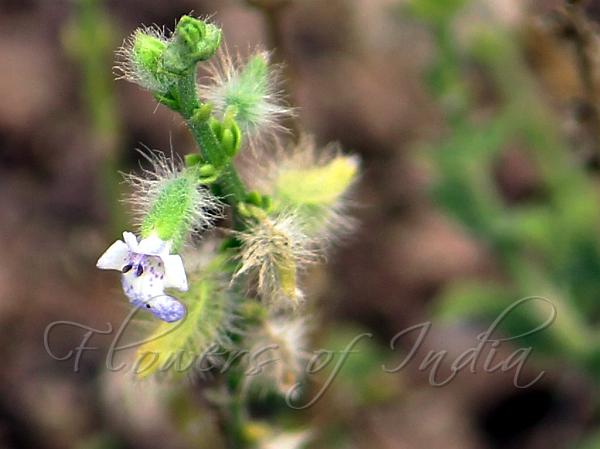|
| Egyptian Sage |
|

|

| File size | 158717 |
| Original date | 6/26/19 11:37 AM |
| Resolution | 1024 x 768 |
| Flash | Flash did not fire, auto |
| Focal length | 250.0mm |
| Exposure time | 1/320s |
| Aperture | 6.3 |
| Focus Distance | |
| Metering Mode | Center weighted average |
| Camera make | Canon |
| Camera model | Canon EOS 700D |
| Sensor type |
|
|
|
|
Photo: |
Botanical name: Salvia aegyptiaca Family: Lamiaceae (Mint family)
Synonyms: Pleudia aegyptiaca, Salvia arida, Thymus hirtus, Salvia pumila
Synonyms: Pleudia aegyptiaca, Salvia arida, Thymus hirtus, Salvia pumila
Egyptian Sage is a woody much branched herb, forming
small clusters. Flowers are borne in simple racemes, sometimes
branched; verticillasters distant, 2-6-flowered. Bracts and bracteoles
present. Flower-stalks are about 2 mm long elongating to about 3.5 mm
in fruit. Sepal-cup ovate to tubular bell-shaped, about 5 mm in flower
and about 7 mm in fruit, with a rather dense indumentum of stalkless
oil globules, capitate glandular and eglandular hairs; upper lip of 3
closely connivent small about 0.3 mm teeth, clearly concave in fruit;
lower lip with 2 tapering-subulate about 3 mm teeth, longer than upper
lip. Flowers are violet-blue, pale lavender or white with purple or
lilac markings on lip, about 6-8 mm long; upper lip straight or
reflexed, much shorter than lower; tube somewhat annulate. Stems are
leafy, erect-rising up, about 10-25 cm tall, above and below with short
or long hairs. Leaves are ovate-oblong to linear-elliptic, about
1.2-2.5 x 0.4-1.0 cm, rounded toothed to sawtoothed, rugulose, on both
surfaces with short eglandular hairs, usually indistinctly stalked with
longer hairs on leaf-stalk. Nutlets are smooth, black, about 2 x 1 mm,
scarcely trigonous, gelatinous on wetting. Egyptian Sage is found in
Cape Verde Islands, Canary Islands, NW and N. Africa, Sudan, Ethiopia,
Arabian peninsula, Iran, Afghanistan, Pakistan, India. Flowering:
March-May.
Medicinal uses: This plant is extensively
exploited as a medicinal plant and locally called Tukhm Malanga. It is
used as antiseptic, carminative, digestive and analgesic.
This plant is extensively
exploited as a medicinal plant and locally called Tukhm Malanga. It is
used as antiseptic, carminative, digestive and analgesic.
Medicinal uses:
 This plant is extensively
exploited as a medicinal plant and locally called Tukhm Malanga. It is
used as antiseptic, carminative, digestive and analgesic.
This plant is extensively
exploited as a medicinal plant and locally called Tukhm Malanga. It is
used as antiseptic, carminative, digestive and analgesic. | Identification credit: Rajkumar Yadav | Photographed in Gujarat. |
• Is this flower misidentified? If yes,